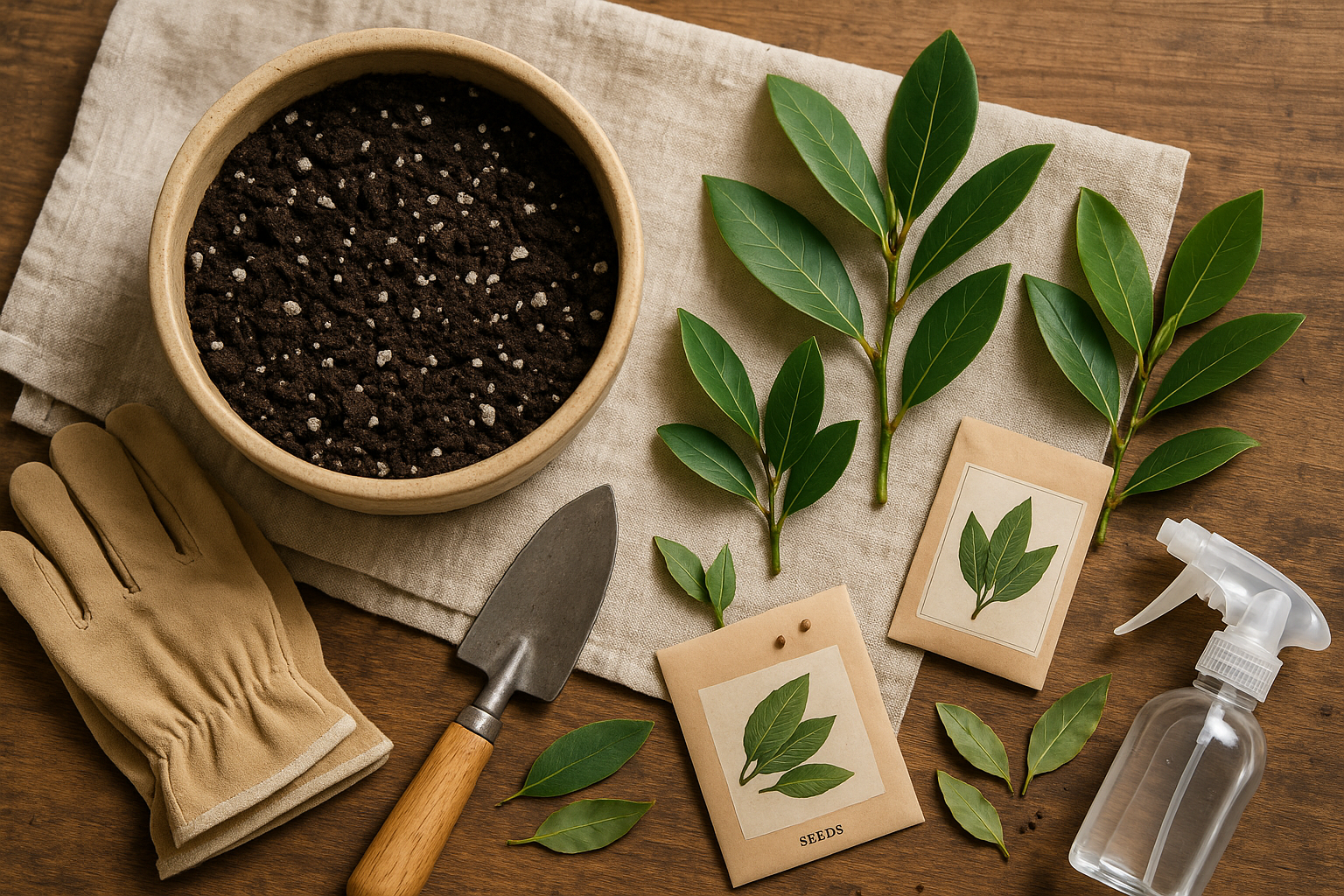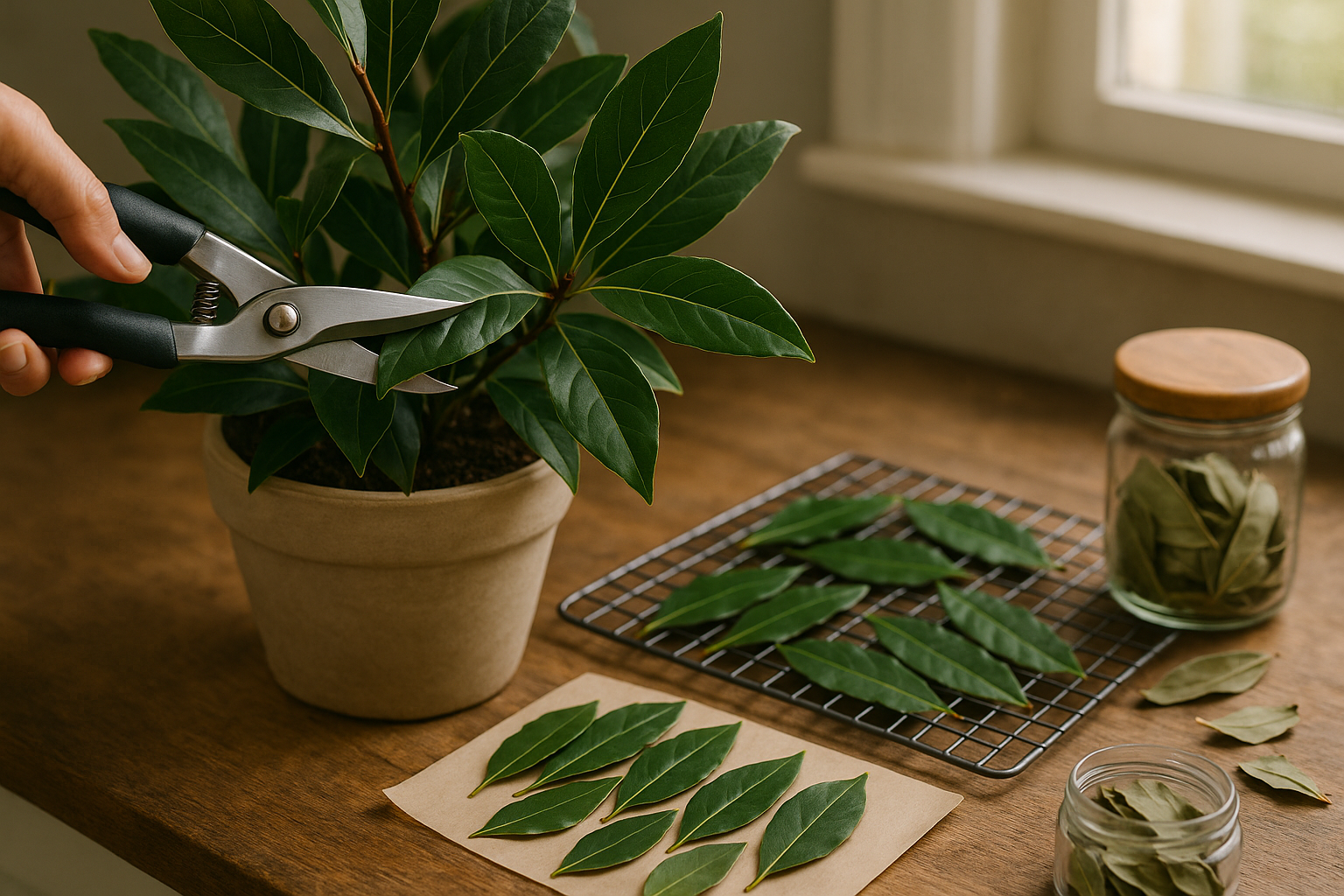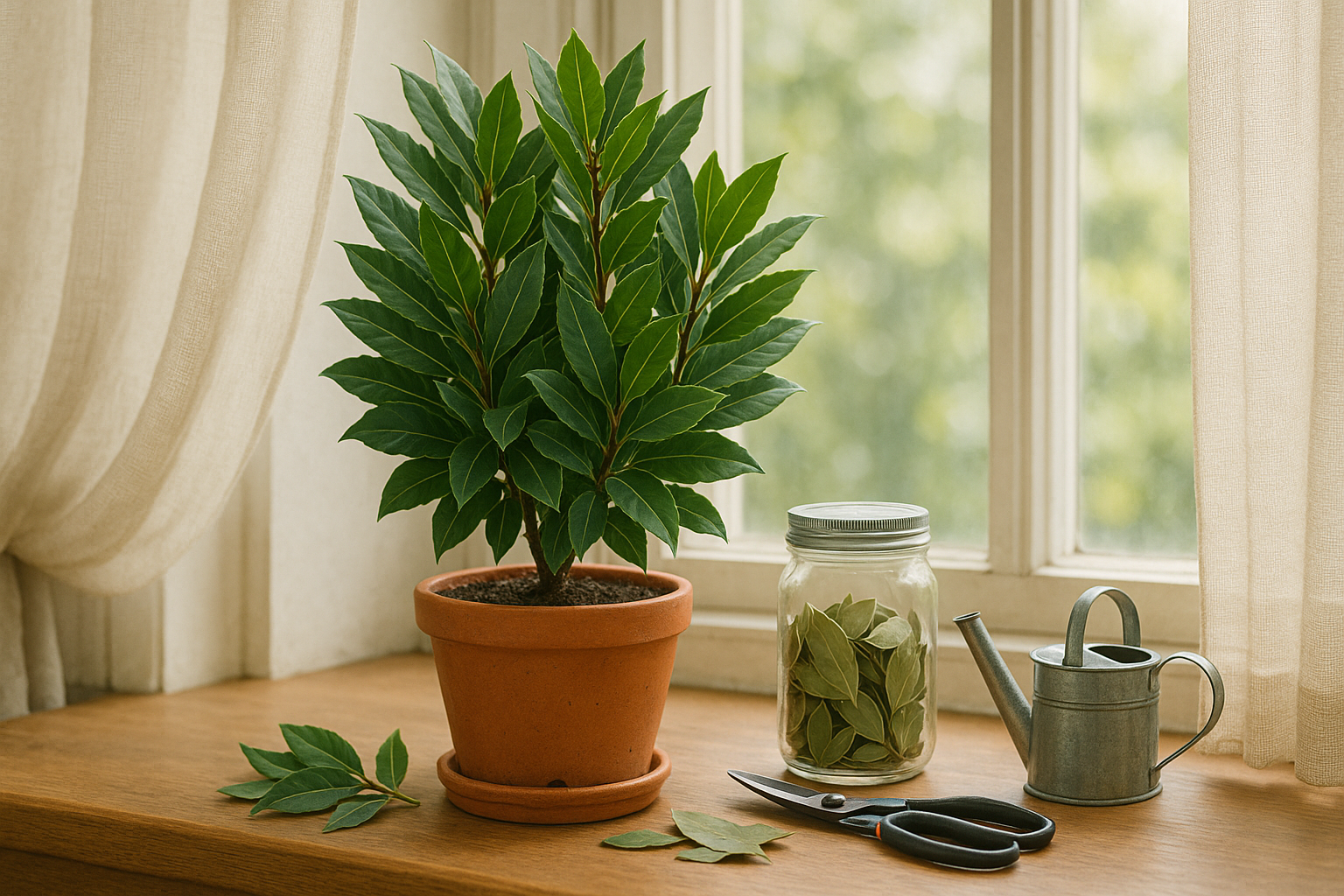Introduction
When it comes to growing bay leaf indoors, many home cooks and plant lovers wonder if it’s really possible to keep this flavorful herb thriving on a sunny windowsill. Bay leaf, also known as bay laurel, is a classic ingredient in everything from soups and stews to sauces, prized for its aromatic depth and versatility in the kitchen.
With indoor gardening gaining popularity—thanks to limited garden space, unpredictable weather, and the desire for fresh herbs year-round—bringing a bay laurel plant indoors is both practical and rewarding. Imagine snipping fresh leaves right before dinner or enjoying the satisfaction of nurturing a culinary staple from your own home.
In this article, we’ll walk you through exactly how to grow, care for, and harvest bay leaf indoors, making it easy for anyone to enjoy this Mediterranean gem no matter where they live.
Is It Possible to Grow Bay Leaf Indoors?
Growing bay leaf (Laurus nobilis) indoors is entirely possible and a rewarding venture for both home cooks and plant lovers, but it does require some thoughtful care. Bay leaf thrives on plenty of bright, indirect sunlight—think a sunny south or west-facing window for at least six hours a day. If your home lacks consistent natural light, supplementing with a grow light is an effective solution.
Temperature is also important; bay likes things warm but not hot, ideally between 60–75°F (15–24°C). It’s sensitive to cold drafts or sudden changes in temperature, so keep it away from drafty windows or air vents.
As for pot size, start with a container about 12 inches wide with good drainage holes, as bay roots don’t like soggy soil. Remember that bay is naturally a slow grower—indoors, expect it to stay compact, often reaching just a few feet tall after several years, unlike the sizeable shrubs seen outdoors.
This slow pace might feel frustrating, but it actually helps make bay more manageable as a houseplant. Pruning will keep it tidy and bushy, and you’ll be able to snip fresh, aromatic leaves to elevate stews, soups, and sauces straight from your windowsill.
For plant enthusiasts, bay’s glossy green foliage offers year-round interest and a touch of Mediterranean charm to indoor spaces. While it isn’t the fastest or easiest herb for beginners, the reward of having fresh bay leaves on hand and nurturing a unique, long-lived houseplant is well worth the effort.
Choosing and Planting Your Bay Leaf Plant

Finding a bay leaf plant to grow at home is easier than you might think. Most local nurseries and garden centers carry young bay laurel (Laurus nobilis) plants, and many reputable online retailers offer both live plants and seeds. If you’re new to herbs or want quicker results, buying a small established plant is the way to go—it can be harvested sooner and is generally hardier.
Starting from seed works too, but it requires lots of patience, as bay seeds can be slow and unpredictable to sprout, sometimes taking months under ideal conditions.
Container Planting Indoors
For container planting indoors, choose a pot that’s at least 12 inches wide with drainage holes at the bottom. Bay laurels hate soggy roots, so pick a high-quality potting mix with good drainage; you can improve most mixes with some perlite or coarse sand.
When repotting, gently tease apart the roots if they’re circling the root ball. Place the plant at the same depth it was in its old pot, and fill in around it with soil, pressing lightly. Water thoroughly and let excess water drain away, then place your bay plant in a spot with bright, indirect sunlight—think a south- or west-facing window.
Keep the soil just barely moist, and never let the pot sit in water.
Starting Bay Plant from Seed
If starting from seed, sow your seeds about a quarter inch deep in pre-moistened potting mix. Cover the container with plastic wrap to retain humidity, and keep it warm and out of direct sun until the seeds germinate.
Whether you start with seeds or a young plant, remember bay is a slow grower, but with the right care, it will reward you with fresh, fragrant leaves for years.
Caring for Your Indoor Bay Leaf Plant
Caring for your indoor bay leaf plant is simple once you know its preferences. Bay laurel thrives in bright, indirect sunlight, so placing it near an east- or west-facing window is ideal. A south-facing window works too, but avoid intense, direct sun that can scorch the leaves. Using sheer curtains can help filter harsh rays if needed.
If you don’t have enough natural light, a full-spectrum grow light is a great backup. Set it on for 10–12 hours daily to mimic outdoor conditions.
Water your bay plant when the top inch of soil feels dry—typically every 7–10 days in spring and summer, with less frequent watering in winter. Make sure the pot has drainage holes to prevent soggy roots, which can lead to root rot.
Bay appreciates moderate humidity; if your home is dry—especially in winter—place a humidifier nearby or group your bay with other houseplants.
As for temperature, bay leaves prefer rooms kept between 60–75°F (16–24°C) but can tolerate brief dips to 40°F (4°C). Keep the plant away from drafts or sudden temperature swings.
Feed your bay every 4–6 weeks during spring and summer with a balanced liquid fertilizer diluted to half strength. Don’t fertilize in autumn or winter, as growth naturally slows.
If you keep your bay outdoors in summer, bring it inside before nighttime temperatures drop below 45°F (7°C), and be sure to check for pests. Overwinter in a cool, bright spot—such as an unheated room with good light.
To encourage bushier growth, pinch off the tips of new shoots regularly or trim overly long branches with clean scissors. Don’t be afraid to prune for shape—bay responds well, and you can use the extra leaves for cooking.
With the right care, your indoor bay leaf plant will stay lush, productive, and healthy year-round.
Preventing Problems
Indoor plants often attract unwelcome guests like scale, spider mites, and aphids. Scale insects look like tiny brown or tan bumps clinging to stems and leaves, while spider mites leave behind subtle webbing and cause yellow dots on foliage. Aphids are soft, green, or black bugs that cluster around new growth.
Watch closely for these early signs:
- Sticky residue on leaves (often from aphids)
- Speckles or discoloration
- Webby threads under leaves
Overwatering can create another headache: fungal problems or root rot, where roots turn brown and mushy, leaves wilt and yellow, and the soil stays soggy.
To prevent pest invasions, inspect new plants before bringing them indoors, wipe leaves occasionally, and ensure good airflow around your greenery. Water only when the top inch of soil dries out, and always use pots with drainage holes.
If pests appear, a gentle rinse in the shower can dislodge many, or use insecticidal soap or neem oil spray—both safe organic solutions for indoor plants. For fungal or root issues, prune affected roots and repot with fresh, well-draining soil.
Staying vigilant, catching problems early, and choosing organic remedies will keep your indoor garden thriving naturally.
Harvesting and Using Bay Leaves at Home

To get the best flavor from your bay laurel plant, harvest leaves when they are a deep green and fully matured—usually from late summer to early fall. Avoid picking young, tender leaves, as they haven’t developed their full aroma.
For harvesting, use clean, sharp scissors or garden shears to snip individual leaves, taking care not to remove more than a third of the plant at once so it stays healthy and keeps producing. After picking, rinse the leaves gently and pat them dry with a paper towel.
Lay the leaves out in a single layer on a wire rack or baking sheet in a dry, well-ventilated area, out of direct sunlight to prevent discoloration. In about two weeks, when they’re completely dry and brittle, store your bay leaves in an airtight container (like a glass jar) away from heat and light to lock in their essential oils.
Dried bay leaves are perfect for slow-cooked dishes—add a couple to soups, stews, rice, or even homemade tomato sauce for a rich, herbal depth. Remember to remove the leaves before serving, as they’re tough even after cooking.
Home-harvested bay leaves can elevate everyday meals with a distinctly fresh, aromatic quality.
Conclusion & Encouragement
Growing bay leaf indoors is easier than you might think—just find a sunny spot, use well-draining soil, and water when the soil feels dry. The simple pleasure of snipping fresh bay leaves for your stews and sauces is incredibly rewarding, not to mention the boost it gives your cooking.
Don’t worry if progress seems slow; bay trees grow steadily and become more robust over time. Pairing bay with other herbs like basil, mint, or oregano can create a thriving indoor herb garden, giving you fresh flavors at your fingertips and turning your kitchen into a green, flavorful sanctuary.
